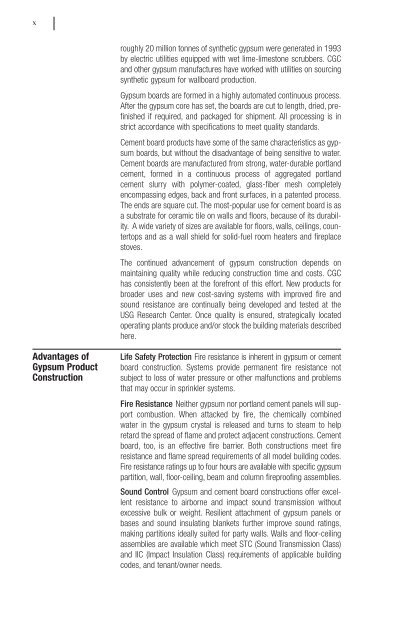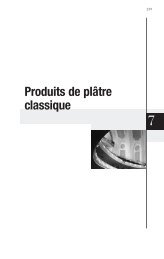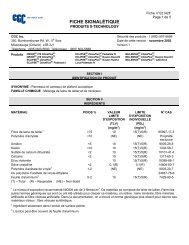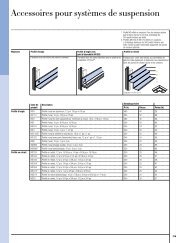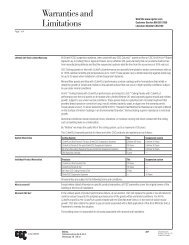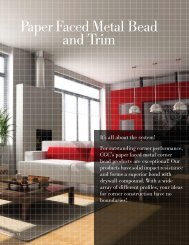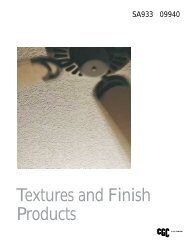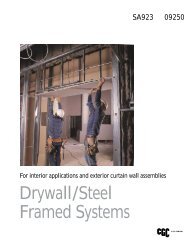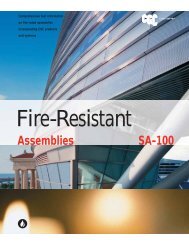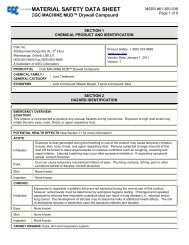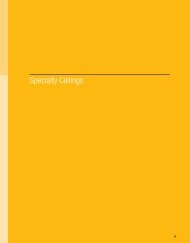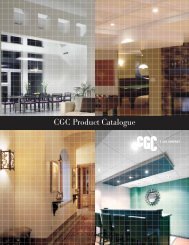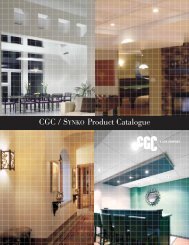The Gypsum Construction Handbook - CGC
The Gypsum Construction Handbook - CGC
The Gypsum Construction Handbook - CGC
You also want an ePaper? Increase the reach of your titles
YUMPU automatically turns print PDFs into web optimized ePapers that Google loves.
x<br />
roughly 20 million tonnes of synthetic gypsum were generated in 1993<br />
by electric utilities equipped with wet lime-limestone scrubbers. <strong>CGC</strong><br />
and other gypsum manufactures have worked with utilities on sourcing<br />
synthetic gypsum for wallboard production.<br />
<strong>Gypsum</strong> boards are formed in a highly automated continuous process.<br />
After the gypsum core has set, the boards are cut to length, dried, prefinished<br />
if required, and packaged for shipment. All processing is in<br />
strict accordance with specifications to meet quality standards.<br />
Cement board products have some of the same characteristics as gypsum<br />
boards, but without the disadvantage of being sensitive to water.<br />
Cement boards are manufactured from strong, water-durable portland<br />
cement, formed in a continuous process of aggregated portland<br />
cement slurry with polymer-coated, glass-fiber mesh completely<br />
encompassing edges, back and front surfaces, in a patented process.<br />
<strong>The</strong> ends are square cut. <strong>The</strong> most-popular use for cement board is as<br />
a substrate for ceramic tile on walls and floors, because of its durability.<br />
A wide variety of sizes are available for floors, walls, ceilings, countertops<br />
and as a wall shield for solid-fuel room heaters and fireplace<br />
stoves.<br />
<strong>The</strong> continued advancement of gypsum construction depends on<br />
maintaining quality while reducing construction time and costs. <strong>CGC</strong><br />
has consistently been at the forefront of this effort. New products for<br />
broader uses and new cost-saving systems with improved fire and<br />
sound resistance are continually being developed and tested at the<br />
USG Research Center. Once quality is ensured, strategically located<br />
operating plants produce and/or stock the building materials described<br />
here.<br />
Advantages of Life Safety Protection Fire resistance is inherent in gypsum or cement<br />
<strong>Gypsum</strong> Product board construction. Systems provide permanent fire resistance not<br />
<strong>Construction</strong> subject to loss of water pressure or other malfunctions and problems<br />
that may occur in sprinkler systems.<br />
Fire Resistance Neither gypsum nor portland cement panels will support<br />
combustion. When attacked by fire, the chemically combined<br />
water in the gypsum crystal is released and turns to steam to help<br />
retard the spread of flame and protect adjacent constructions. Cement<br />
board, too, is an effective fire barrier. Both constructions meet fire<br />
resistance and flame spread requirements of all model building codes.<br />
Fire resistance ratings up to four hours are available with specific gypsum<br />
partition, wall, floor-ceiling, beam and column fireproofing assemblies.<br />
Sound Control <strong>Gypsum</strong> and cement board constructions offer excellent<br />
resistance to airborne and impact sound transmission without<br />
excessive bulk or weight. Resilient attachment of gypsum panels or<br />
bases and sound insulating blankets further improve sound ratings,<br />
making partitions ideally suited for party walls. Walls and floor-ceiling<br />
assemblies are available which meet STC (Sound Transmission Class)<br />
and IIC (Impact Insulation Class) requirements of applicable building<br />
codes, and tenant/owner needs.


